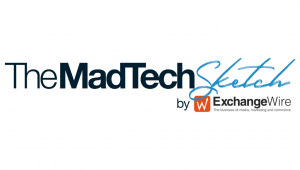Tom Jenen Explains The Mechanics Of Impression-Level Trading On The Admeld Platform
by Ciaran O'Kane on 7th Sep 2010 in News


RTB is quickly becoming part of the display buying landscape in the US, and still dominates a lot of coverage in the mainstream trade press there. We might be lagging six-to-twelve months behind the US, but there are signs of traction for this new buying practice in the European display market. Progressive European buy-side traders are jumping straight in - recognising the obvious advantages of trading through RTB. But what are the REAL benefits of RTB for the average European publisher and how does a typical real-time trade work? ExchangeWire spoke to Tom Jenen, Commercial Director, AdMeld EMEA, this week about the advantages of RTB for the European buy and sell side, the mechanics of impression-level buying and the growth of the market here in Europe.
Can you explain to those not familiar with real-time bidding how impression-level trading works on the AdMeld platform?
TJ: Real Time Bidding (RTB) is a standard that enables publishers to sell individual ad impressions at auction. AdMeld’s technology gives premium publishers the option to connect to every major RTB bidder—including those known as Demand Side Platforms (DSPs)—and gives them full control over how their inventory is sold, to whom and for how much. Because RTB allows impressions to be transacted individually, with the right tools, it enables a new level of control and transparency.
Can you explain the mechanics of a typical RTB trade?
TJ: When a publisher makes an impression available on our platform, AdMeld issues a bid request, and each bidder must respond within 120 milliseconds. These bids compete not only with one another, but also against other available demand sources (such as ad network tags). Among valid bids that meet the price, advertiser and other criteria of the publisher’s business rules, AdMeld picks the winner and redirects to the creative.
Execution relies on speed and power of the platform’s backbone, which is why AdMeld maintains a persistent server-side connection with each DSP. Working with a dozen (or more) bidders on a single impression is fairly straightforward, but doing it billions of times a month with absolutely minimal latency requires a robust global infrastructure.
What kind of traction has RTB now got in the European market? Can you provide any hard stats from an Admeld perspective?
TJ: In Europe AdMeld currently processes 20 billion monthly bid requests. Although this is a small portion of our worldwide volume, RTB in Europe is now growing faster on our platform than it is in the US—and the US is growing very quickly. For example, having launched in Europe at the beginning of this year, RTB is now filling between 20-25% of our UK inventory, and we are now building RTB demand in France, Netherlands and Germany among other geos.
Are European publishers, who are currently offering their inventory through RTB, seeing the benefit in terms of price lift? What kind of results are you seeing from RTB trading?
TJ: On average, RTB yields CPMs that are 200-300% of traditional ad networks.
To those unfamiliar with RTB, how would you sell this real-time buying methodology to European publishers?
TJ: In addition to our granular controls, maximum demand transparency and higher CPMs, AdMeld’s RTB gives publishers access to budgets they wouldn’t otherwise be exposed to—such as those being diverted from search and other media. Publishers now participating in RTB in Europe are developing invaluable data, experience and relationships that will put them at an advantage in the future.
What kind of controls are in place to protect publishers?
TJ: Through AdMeld, publishers can set price floors and blocks against individual buyers, advertisers, audience segments (as defined by 3rd party data providers) and a range of criteria such as site, section, placement, ad size, etc. URL blindness is now available as well. We have a number of policies and features that protect publishers’ data, and we’re adding more protections regularly.
Does AdMeld operate dynamic floors on RTB inventory? And if so how does this process benefit publishers?
TJ: Dynamic flooring is now in testing. The key is to maximise publisher revenue and to continue delivering value to buyers, both over the long term. We provide a great deal of education to help publishers decide how and when they use a feature like this.
Are there many European ad nets currently buying RTB inventory? Or are the trades mostly coming from agency and third party DSPs?
TJ: Today a handful of European ad nets are already buying RTB inventory, using the bidding technology of the top DSP partners. Others, like Criteo, are buying RTB through us directly, which gives those buyers much greater control and pricing information.
How does AdMeld's RTB offering differentiate from the other big RTB platform in the European market, namely Google Ad Exchange?
TJ: In transparency of information, data protection, and maximising value per impression across all buying opportunities, AdMeld is the best choice for publishers. In today’s market there are two kinds of monetisation tools: those built primarily for buyers and those built primarily for sellers. AdMeld was built for publishers and remains firmly focused on the sell side. As a result, we’re known to buyers for having the highest percentage of premium publisher impressions - which makes a tremendous difference in buying decisions. Though Google can certainly help publishers, they’ve become what they are by helping buyers buy smarter and more effectively. They’re very good at it and are always looking to enhance those capabilities—hence their recent acquisition of Invite Media. Other exchanges have also made the choice to focus on the buy side. It’s a valid choice but we believe publishers will get the greatest return and security from partners who are focused on meeting their unique needs.
From a buy-side perspective, how difficult is it to integrate with the AdMeld platform and buy through RTB?
TJ: The feedback we’ve had from buyers is that our RTB APIs are logical and straightforward. Today we have more than ten European buyers integrated and we expect the number to double by the end of the year.
Do you see more European ad inventory being made available through RTB on the AdMeld platform over the coming twelve months? Are there any projections you can share?
TJ: Absolutely. In the broadest sense, the European RTB market appears to be somewhere around where the US RTB market was about nine months ago. My guess is that in a year we’ll be monetising 5x-10x the number of European RTB impressions we are today.
Now that AdMeld has started to optimise yield across mobile inventory, will you be making European mobile inventory available through RTB in the coming months?
TJ: We’re big believers in the power of RTB and its potential across multiple platforms including mobile. This is definitely on our roadmap.








Follow ExchangeWire